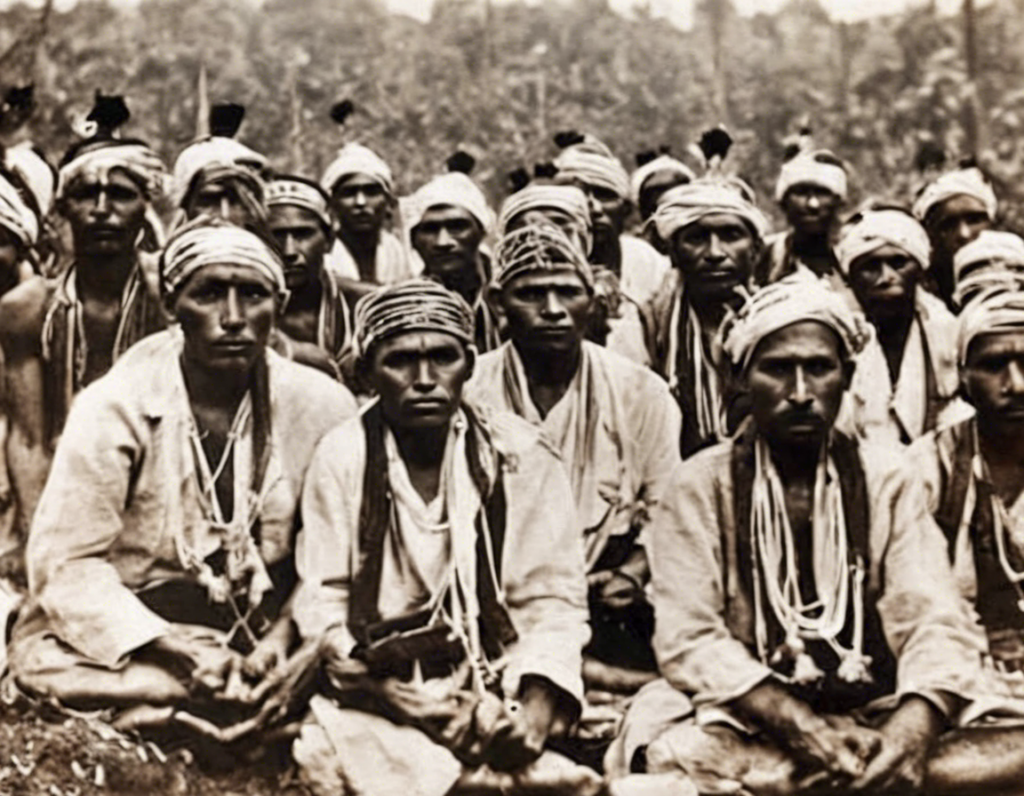
- June 23, 2024
- 12:44 pm
- No Comments
Introduction
The history of India’s freedom struggle is a narrative that encompasses various movements, protests, and uprisings against British colonial rule. While leaders like Mahatma Gandhi, Subhas Chandra Bose, and Jawaharlal Nehru are often highlighted for their roles in the independence movement, it is crucial to recognize the significant contributions of tribal uprisings in shaping the course of India’s fight for freedom. These uprisings, led by indigenous communities across different regions of the subcontinent, played a pivotal role in challenging British dominance and asserting the rights of marginalized groups.
Historical Context
Tribal communities in India have a long history of resisting external forces, be it colonial powers or dominant local rulers. The British colonial expansion into tribal territories during the 18th and 19th centuries led to widespread displacement, exploitation, and cultural erosion among indigenous populations. In response, several tribal groups rose in rebellion against the British East India Company and later the British Crown. These uprisings were not only struggles for autonomy and self-determination but also acts of defiance against the oppressive policies and practices of the colonial administration.
Key Tribal Uprisings
-
The Santhal Rebellion (1855-1856): The Santhal tribe in present-day Jharkhand, Bihar, and West Bengal revolted against the British authorities in a movement known as the Santhal Rebellion. Led by leaders like Sidhu and Kanhu Murmu, the Santhals sought to establish their own sovereignty and resist the encroachment of outsiders on their land.
-
The Munda Uprising (1899-1900): The Mundas, another prominent tribal group in Jharkhand, rose in revolt against the oppressive land revenue policies of the British administration. The Munda Uprising, led by Birsa Munda, aimed to assert the rights of indigenous people over their traditional territories and resources.
-
The Bhil Revolt (1913): The Bhils, a tribal community scattered across several states in central India, staged a rebellion against the British exploitative practices and discriminatory policies. The Bhil Revolt underscored the resilience and unity of tribal groups in the face of external aggression.
Impact on the Freedom Struggle
The tribal uprisings in India had a profound impact on the broader freedom struggle against British colonialism. These movements helped in creating a sense of solidarity and resistance among diverse ethnic groups, fostering a spirit of unity in the fight against a common oppressor. The sacrifices made by tribal leaders and communities also inspired mainstream nationalist leaders and organizations to incorporate the demands and grievances of indigenous populations into the larger anti-colonial agenda.
Challenges and Legacy
Despite their valiant efforts, many tribal uprisings were ruthlessly suppressed by the British authorities, leading to loss of lives and livelihoods among indigenous communities. The legacy of these movements, however, continues to resonate in India’s post-independence era, as tribal groups strive to preserve their cultural identity and secure their rights in a rapidly changing socio-political landscape. The recognition of tribal autonomy and the protection of their traditional territories remain pressing issues in contemporary India, highlighting the ongoing relevance of the struggles initiated by these communities centuries ago.
Conclusion
In conclusion, the tribal uprisings in India’s freedom struggle are a testament to the resilience, courage, and determination of indigenous communities in the face of colonial oppression. By challenging the status quo and asserting their agency, tribal groups played a crucial role in shaping the narrative of India’s independence movement and advocating for a more inclusive and equitable society. It is essential to acknowledge and commemorate the sacrifices and contributions of these unsung heroes of the freedom struggle, ensuring that their legacy is preserved for future generations to draw inspiration from.
FAQs
- Were tribal uprisings localized movements or did they have broader implications for the freedom struggle?
-
While tribal uprisings were often rooted in local grievances and aspirations, they also had symbolic and strategic significance in the larger context of India’s fight against colonial rule. These movements highlighted the diversity and unity of anti-colonial resistance across different regions of the subcontinent.
-
How did mainstream nationalist leaders collaborate with tribal communities during the freedom struggle?
-
Mainstream nationalist leaders like Mahatma Gandhi and Jawaharlal Nehru recognized the importance of tribal support in the freedom struggle and sought to build alliances with indigenous groups. Efforts were made to incorporate tribal demands and perspectives into the broader political agenda of independence.
-
What were some of the lasting impacts of tribal uprisings on post-independence India?
-
The legacy of tribal uprisings in India’s freedom struggle is reflected in the constitutional provisions for tribal rights and autonomy. The Fifth Schedule of the Indian Constitution, for instance, contains special provisions for the protection and welfare of tribal communities.
-
How did the British respond to tribal uprisings during the colonial period?
-
The British authorities often used brutal force to suppress tribal uprisings, deploying military units and punitive measures to quell resistance. Many tribal leaders were captured, killed, or exiled as a result of their involvement in anti-colonial movements.
-
What role did women play in tribal uprisings during the freedom struggle?
- Women in tribal communities actively participated in various uprisings, serving as leaders, organizers, and combatants in the struggle against colonial oppression. Their contributions, though often overlooked, were instrumental in mobilizing support and sustaining resistance movements.